The Key to Operationalizing Meaningful Business Impacts

By David C Forman, Author of Fearless HR and Fearless Talent Choices
WHY SHOULD YOU CARE?
The Reverse Trifecta identifies meaningful business impacts and then the capabilities in the workplace and skills in the workforce that support these desired outcomes.
The Reverse Trifecta is not about betting on several confused horses running clockwise around a racetrack. That would be amusing, but as we have seen, the Trifecta is a metaphor for something that is far more important: The three factors that characterize successful businesses and organizations—a talented workforce, an agile and vibrant organization, and meaningful business impacts ( The Trifecta – The HR Congress Magazine (hr-congress.com). All three must be present or else the picture is incomplete, the balance is upset, and the opportunity is lost. While it can be useful to write about individual popular topics such as culture, leadership, high performers, agility, mindfulness, open talent marketplaces, and transparency, the Trifecta identifies the essence of high- performing businesses and, most importantly, the interactions and symbiotic relationships among talent, culture & organization, and business results that must occur.
It also turns out that the Trifecta can work backwards. By starting at the end, the Reverse Trifecta is a useful paradigm for measuring and operationalizing business outcomes that matter. It is a very difficult and arduous task to get everyone in the organization pulling in the same direction and on the same page. Many organizations lose their way, get out of alignment, are flooded with data, and are slow to react. This is especially true in the 21st century world of unrelenting change, global interdependence, and uncertain futures. The result of these forces is that there is an abundance of irrelevant noise, poor information, missteps, extraneous data, and false positives to navigate. How can we make the best choices and focus on the critical few opportunities as opposed to the inconsequential many? How do we best use the precious resources and time that we have to get everyone synchronized and moving forward?
Keys to Operationalization
These are not new dilemmas, and there have been a variety of tools to assist organizations in implementing strategy and achieving desired outcomes. Many have been integrated into the business planning and communication processes, including SMART goals, KPIs, OKRs and OPKAs. Each of these alphabet soups has strengths but has often fallen short in the quest to achieve desired business outcomes with regularity.
- SMART (Specific, Measurable, Achievable, Relevant and Timely) goals have been around for decades. As the name implies, this tool focuses on goal setting—most notably specific and measurable goals. Their value has been to move away from general and amorphous goals that could mean anything to anybody. This is an important contribution but in practice SMART goals often focus on short-term goals that are easy to measure. They don’t usually address the most important issues, nor how to achieve them.
- KPIs (Key Performance Indicators) are useful ways to track performance to a goal. Their contribution is to focus on the specific steps in the process to goal achievement. The goals or objectives are established in the business planning process, and, therefore, the risk exists that KPIs are established for goals that aren’t important or shared by others.
- OKRs (Objectives Key Results) is an easy-to-understand goal setting framework that identifies the goal (objective) and the achievements (KRs) that relate to progress in reaching that goal. OKRs, therefore, link objectives to key process steps. Based on the work of Andy Groove who felt that teams were more effective focusing on outcomes and not just procedures, OKRs have been widely used in Silicon Valley. This simple framework can, however, become bogged down in organizations where too many objectives are set; not enough follow up occurs; objectives become what is easy to measure, not what is meaningful; and not considering major unanticipated opportunities.
- OPKAs (Opportunities, Priorities, Key Actions) is a more market-driven approach that is centered on opportunities rather than defined measurable goals. It is more open ended and broad-based than specific goal-based frameworks (which is both an advantage and potential weakness). It also introduces the notion of priorities as a means of recognizing that in a constrained environment, choices must be made to ensure the most important opportunities are addressed.
There is one more practical tool that assists in operationalizing key business impacts and has benefited from the strengths and limitations of the previous approaches. The Reverse Trifecta identifies meaningful business impacts and then the capabilities in the workplace and skills in the workforce that support these desired outcomes. The place to start, then, is at the end. A meaningful business impact is not just the outcome itself but is characterized by four qualities that make that outcome meaningful: 1) clear alignment to a strategic or business standard; 2) a measure that is relevant and compelling to critical audiences; 3) supporting data that enables in-depth analysis to define problems more thoroughly; and 4) practical actions that can improve the situation and drive change.
| Meaningful Business Impact for an Outcome | Criteria | Rationale |
| Alignment | Strategy, business goals, value proposition, market opportunity | Why should this outcome be pursued? |
| Measures that Matter | Counting the Number of times something occurs Internal year to year comparisons External benchmark comparisons Monetization | What data are most meaningful and likely to spur action? |
| In-depth Analysis | Robust data and Next Level Analysis Moving beyond summary data and generalities to further define the problem. Segment results by product, region, location, competitor, workforce, or other key variables to narrow focus on the true problem. | What further insights can be gained from more in-depth analysis? |
| Actionable | Organizational Capabilities Workforce Skills | What can be done? |
Figure 1: Qualities of Meaningful Business Impacts in The Trifecta
Consider the example of reducing turnover.
- Alignment. Most organizations view turnover as a problem; it threatens business goals and undermines value propositions. It wastes money and talented people. Some business models, however, are built on anticipated turnover; consulting companies, law firms, and retail food services are just several examples. For these organizations it is not worth the time and effort to address turnover. But for most organizations, turnover is a big issue and the linkage between turnover and strategic capability is clear.
- Measures that Matter. Turnover can be reported in several ways. The number of people who left the organization can be reported. “We lost 43 people last year.” While this is true, it is hard to know if this is good or bad without a standard for comparison. Turnover can also be reported by adding comparison standards to numbers or percentages, both internally (Last year 75 people left the organization, compared to 43 this year.) and/or externally ( the industry turnover average is 14% while our turnover rate is 18%). While these data are descriptive of turnover within an organization, they do not convey its true impact. When turnover is analyzed in terms of what it costs an organization to replace a capable performer, the picture changes significantly. By quantifying the time it takes for a new hire to become proficient, and then converting these time frames (average salary hourly rates) into money, it conservatively costs the organization 1.5 times a fully burdened salary (includes benefits) to replace a competent employee. If the typical fully burdened salary is $100K, then it costs the organization $150,000 for each lost employee. If 30 people leave the organization, that is a $4.5 million dollar issue. Whenever possible, monetize business outcomes. Everyone wants to improve revenues and reduce costs. Monetary impact gets the attention of company leaders and colleagues. It provides an impetus that just numbers alone do not.
- In-depth Analysis. A meaningful business impact must be supported by robust data, not opinions or generalities. There are two next levels of analysis (NLA) that must occur. The first is definitional: what is the type of turnover to consider. Most organizations track turnover that is controllable and regrettable. All turnover is not bad or preventable, so it is important to focus on the aspects of turnover that are worth addressing. The second next level analysis is on the data for, in this case, regrettable turnover. Even if the impacts are monetized (as we hope they are), further questions must be asked: For which departments and locations in the organization? For which groups of people? It may be that there is little variation among these segments across an organization, but there usually are significant variations. There is, for example, often a particular location, manager, or country that performs better (or worse) than others. Another example: at least 50% of regrettable turnover occurs within the first 18 months of employment, so let’s concentrate on this group and not waste time on the entire company. Next level analysis helps to ensure that the right specific problem is being addressed and that solutions are laser-focused, not scatter-shot. Narrow cast solutions are more cost effective and efficient than broadcast ones.
- Actionable. Some issues are intractable and cannot be reasonably addressed. It is a waste of time and resources to deflect the organization with these issues, no matter how troubling. A good reality test is to list the workforce and workplace actions that could be taken to address an outcome. If this list isn’t very long or compelling, then perhaps the goal should be reconsidered.
In terms of regrettable turnover, the workplace should reflect the model described in a previous chapter: The Secrets of High Performing Cultures – The HR Congress Magazine (hr-congress.com) and the workforce should exhibit and further develop Meta-Learning skills see: A Renaissance for the Learning Profession – The HR Congress Magazine (hr-congress.com), strong personal networks, and be comfortable with flexible team-based roles.
Reverse Engineering The Trifecta
To further illustrate the power of reversing the Trifecta, let’s consider the example of the critical business outcome of Innovation. This outcome is particularly critical in a fast-changing world, and accordingly, many businesses and organizations value innovation. But some choose to focus on other core capabilities relevant to them. So let’s run Innovation (for Company Y) through the four yardsticks for a meaningful business impact that drives the reverse trifecta.
- Alignment: Is Innovation a nice to have or essential to the competitive positioning of Company Y? There needs to be a direct linkage to Innovation from declared strategy, business goals, value propositions, or market opportunities. If this linkage does not exist, resources should be allocated elsewhere. The real test of strategy is to say no to initiatives that are intriguing but fail the test of alignment.
A major problem in operationalizing meaningful business outcomes is that organizations lose their focus, try to do everything for everybody, and just like a car out of alignment, wander all over the road. Alignment answers the question of why this outcome should be pursued, and it is vital to keeping everyone “on the same page.”
- Measures that Matter: Innovation can be measured in many ways. Some are easy to do but may not be compelling or meaningful to Company Y leaders and colleagues. Innovation can be measured in at least four ways. First, it is relatively easy to simply count the number of patents awarded and/or new products released during the past year. These are valid measures of creativity and innovation but may not be convincing to all colleagues. Second, internal year-to-year historical comparisons can be made so that, for example, the number of new products released over the past four years can be arrayed. These findings show whether the current year’s performance is better or worse than last year’s. Third, external comparisons can be made to competitors or industry averages. These data may be harder to obtain, but historical comparisons (or benchmarks) can be useful positioning information for Company Y leaders.
The fourth method takes a different approach. I have argued in these pages (HR’s Ultimate Metric – The HR Congress Magazine (hr-congress.com) that the most compelling and meaningful metrics are not numbers or percentages, but money gained or lost. For Innovation, it is not the number of new products released, but the revenues generated by these new products that matters most to business leaders and colleagues.
The Vitality Index for Company Y is the percentage of revenue that comes from new products released in the prior two years (note: depending on the complexity of product development, it may take longer than 2 years to see revenue impacts). This percentage is then compared to standards for similar organizations, usually in the 25% to 30% range. If less than 25% of yearly revenues do not come from new products released within the past two years, the company’s innovation abilities are not achieving desired results. This, of course , is significant because many companies rely on legacy products for the majority of their revenue, and, over time, this is not a sustainable business model.
- In-depth Analysis: There are two levels of next level analysis for innovation. The first is definitional and for The Vitality Index this requires further specification of “what is a new product.” Is it a minor tweak of an existing product, a new version of the same product, a new market for an existing product, or a completely new offering. This determination will assist in establishing the second definitional factor: the appropriate number of years before revenue is expected. The second next level analysis is to segment which new products are producing the most revenue in what markets. This information will help target the proposed actionable solutions to the areas of biggest need.
- Actionable: There is no point concentrating on Innovation if no actions are going to be taken. In the Reverse Trifecta actions are directed at the workplace and workforce; in other words, at the cultural & organizational and talent levels. Both are required and are mutually supportive of each other. The culture & organizational practices must support and promote Innovation and the risks and rewards associated with it. Opportunities must be provided to help people move out of their comfort zones, take risks, be fearless, and support others in doing so. At the Talent level, people in the organization must be bold, willing to question, be confident enough to take risks, and able to respond to new situations and demands quickly.
Final Thoughts
It is difficult to operationalize meaning business impacts in any company or organization. The larger the organization, the more difficult communication and execution. When the number of employees exceeds 150, research has shown that communication becomes more layered, complicated, and sporadic. Probably the most important communication within an organization is how to focus and prioritize all the possible initiatives that could be addressed, especially when so much confusion and so many possibilities abound. It is hard to keep the organization focused on the right things and people on the same page.
Because this is such a systemic weakness in most organizations, a number of tools and techniques have emerged to assist in the process of selecting, communicating, prioritizing and implementing meaningful business goals and initiatives. The alphabet soup of SMART goals, KPIs, OKRs and OPKAs have been useful tools, and, when used wisely and supported internally, can be very effective. But problems remain, and among the most salient shortcomings are the lack of alignment to a strategic or business standard (the why); not simply measuring what is easy to measure; not monetizing critical business outcomes; not being open to new market opportunities while just concentrating on short-term, often insignificant goals; failure to provide next level data analysis to pinpoint more precise diagnosis; and, perhaps most importantly, not delineating practical actions in both the workplace and workforce that enhance operationalizing key business impacts.
The Reverse Trifecta is a common-sense approach to implementing business outcomes that addresses many of these shortcomings. It also reinforces the primacy and critical interactions among the three essential elements: Meaningful Business Impacts driven by Talented Employees and supported by a Vibrant Culture & Organization. The following table summarizes how the Reverse Trifecta can be applied to the outcome of Innovation.
| Meaningful Business Impact | Innovation |
| Alignment | Strategic and Business Goals |
| A Measure that Matters | The Vitality Index (Monetization) |
| In-depth Analysis | Definitional: Distinguishing a new product from an upgrade, and using two years for product revenue expectations Further Diagnosis: Segment Vitality Index by product and markets to determine variations that should be addressed by Actions |
| Actions: A Range of Organizational Capabilities that Support Innovation | Values support risk-taking, diversity of thought, inclusion, and failures as learning moments Heterogeneous and cross-disciplinary teams Open architecture innovation programs Psychological safety is promoted and reinforced Workspaces encourage collaboration and exchange of ideas Innovation fairs and contests to inject fun and get everyone involved Everyone is encouraged to speak out and contribute |
| Actions: Workforce Skills (to Support Innovation) that Should be Hired for, Developed and Reinforced | Continuous learning Curiosity Lead-time ahead Risk-taking Systems thinking Collaboration Resilience |
Figure 2: The Reverse Trifecta for Innovation
Try The Reverse Trifecta (Impacts, Culture & Organization, People) in your next team session. Start at the end, with a Meaningful Business Impact, follow the flow, and enjoy the run around the track.
Written by: Dave Forman
Culture Performance Management Talent Talent Management
Previous post

- 7302
- 1
labelArticles today2022.12.07.
Why Not Adopt NASA’s ‘Learn From Everyone’ Approach?
Gary Flood, Journalist, The HR Congress WHY SHOULD YOU CARE? NASA named for 10 years in a row the best place to work among large agencies in the Federal [...]
Similar posts

labelArticles today2024.07.24.
AI-Powered HR: Strategic Benefits and Practical Applications

labelArticles today2024.06.24.









Post comments (0)